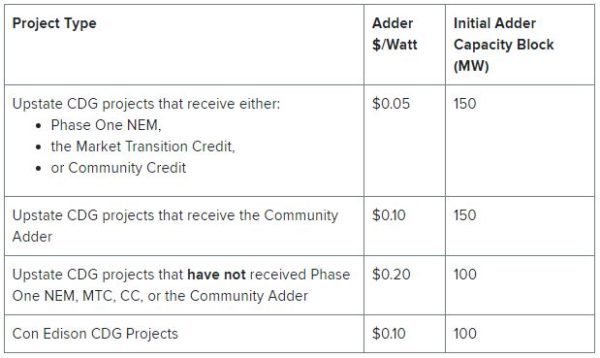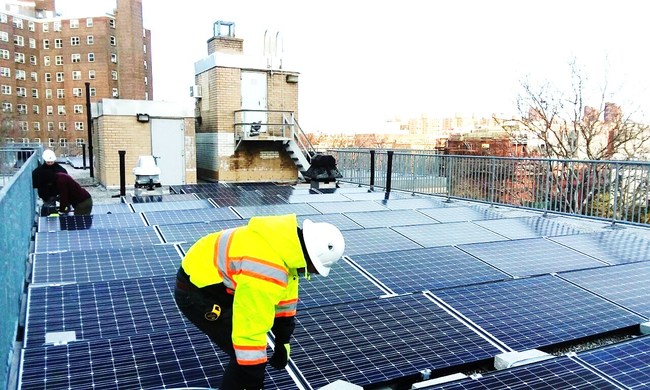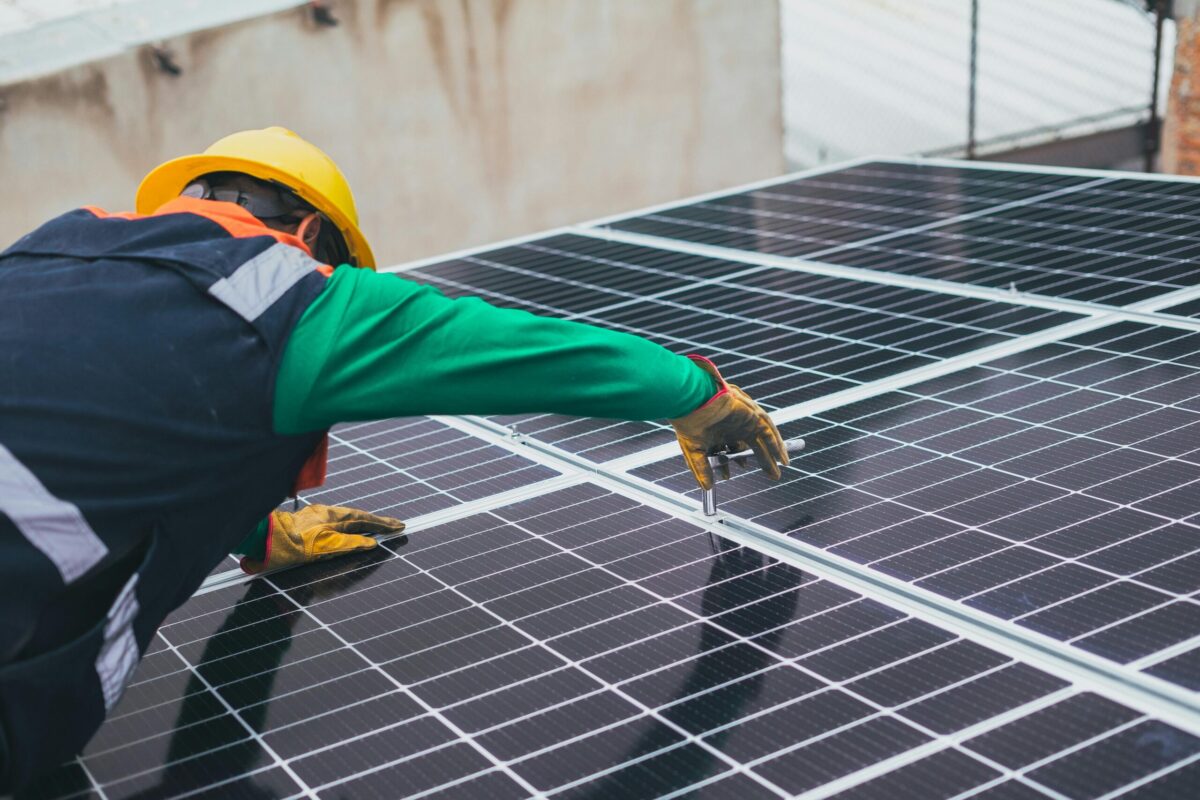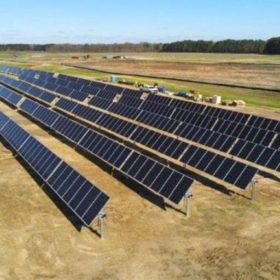The New York State Energy Research and Development Authority (NYSERDA) released $52.5 million in funding through the Inclusive Community Solar Adder (ICSA) program, which aims to provide utility bill savings through community solar energy for 50,000 households. The program includes low-to-moderate-income subscribers, affordable housing providers, and organizations working with disadvantaged communities.
Equitable access to solar for low-to-moderate-income people can be challenging, as ownership and leases are often financially out of the question. Community solar represents an opportunity for underserved communities to participate in the benefits of clean energy. The incentives provided by this program are designed to better fund programs that have a focus in serving these communities.
The incentive is an installer-facing per-Watt adder that pays different amounts depending on other incentives that the project has already received:

Image: NYSERDA
An additional environmental justice incentive adds $0.20/W for Con Edison projects that are located in, benefit, and are developed in partnership with environmental justice communities burdened by nearby electric power generating facilities.
EnergySage reports that on a cost per Watt basis, a solar panel installation for homeowners in New York ranges in price from $2.45 to $3.31.
To receive the adder incentive, eligible projects must be metered as community distributed generation. The projects must meet the requirements set by the NY-Sun Commercial/Industrial (750 kW to 7.5 MW systems) or the NY-Sun Nonresidential incentive program. Projects must dedicate no less than 20% of their total capacity to eligible residential subscribers.
The incentive was first discussed in March in a workshop, where some participants found the eligibility rules to be overly inclusive, said Hodgson Russ Attorneys. The New York Solar Energy Industries Association (NYSEIA) suggested that the LMI CDG Adder should only be provided to projects that would not receive the Community Adder, Phase One Net Energy Metering, the Market Transition Credit or the Community Credit, as those projects have progressed to a certain level of financial viability. Other projects, where the additional adder may be needed the most, could be left with limited financial viability.
NYSERDA disregarded this recommendation, and said that all pipeline projects would be eligible. It clarified, however, that projects that had already reached operation would not qualify.
This content is protected by copyright and may not be reused. If you want to cooperate with us and would like to reuse some of our content, please contact: editors@pv-magazine.com.









By submitting this form you agree to pv magazine using your data for the purposes of publishing your comment.
Your personal data will only be disclosed or otherwise transmitted to third parties for the purposes of spam filtering or if this is necessary for technical maintenance of the website. Any other transfer to third parties will not take place unless this is justified on the basis of applicable data protection regulations or if pv magazine is legally obliged to do so.
You may revoke this consent at any time with effect for the future, in which case your personal data will be deleted immediately. Otherwise, your data will be deleted if pv magazine has processed your request or the purpose of data storage is fulfilled.
Further information on data privacy can be found in our Data Protection Policy.